

Tivoli Gardens
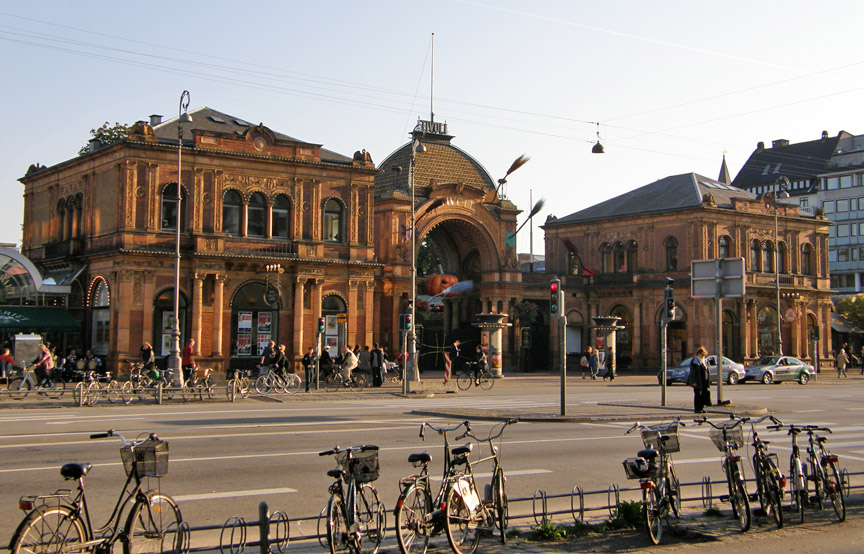
entrance to Tivoli Gardens
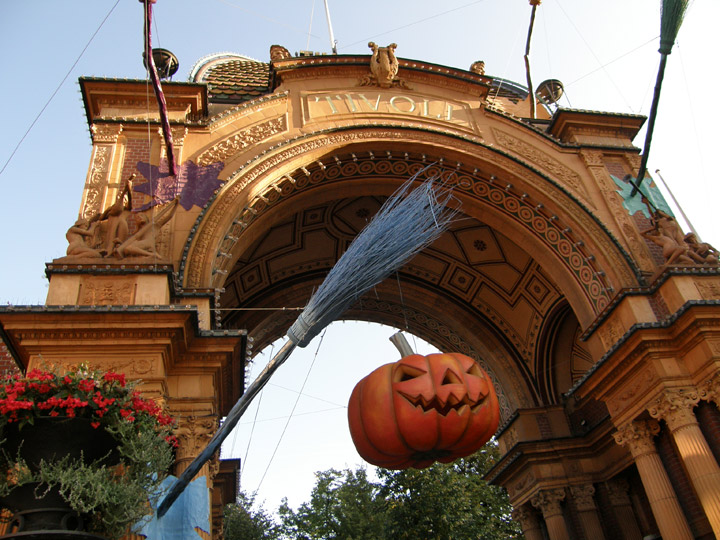
come for Halloween
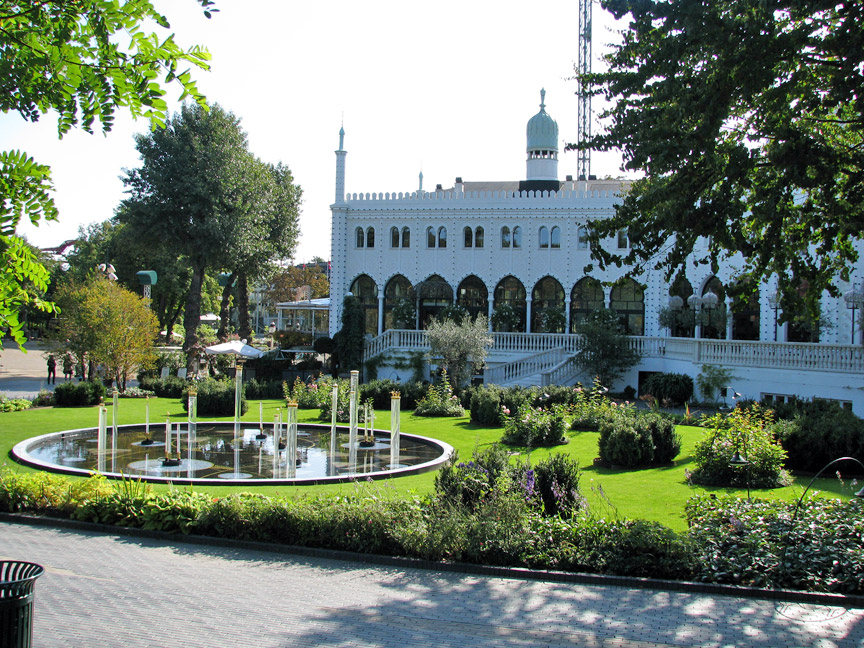
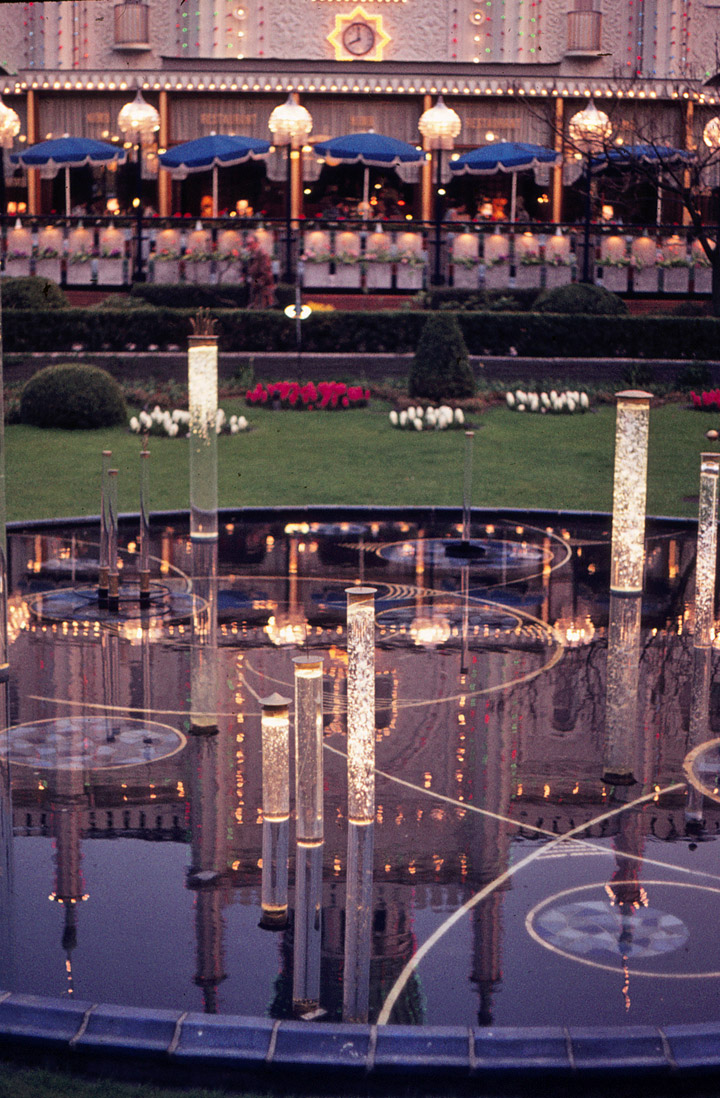
Tivoli Gardens at night
Tivoli Gardens is a famous amusement park and pleasure garden in Copenhagen, Denmark. The park opened on August 15, 1843 and, except for Dyrehavsbakken in nearby Klampenborg, it is the oldest amusement park which has survived intact to the present day.
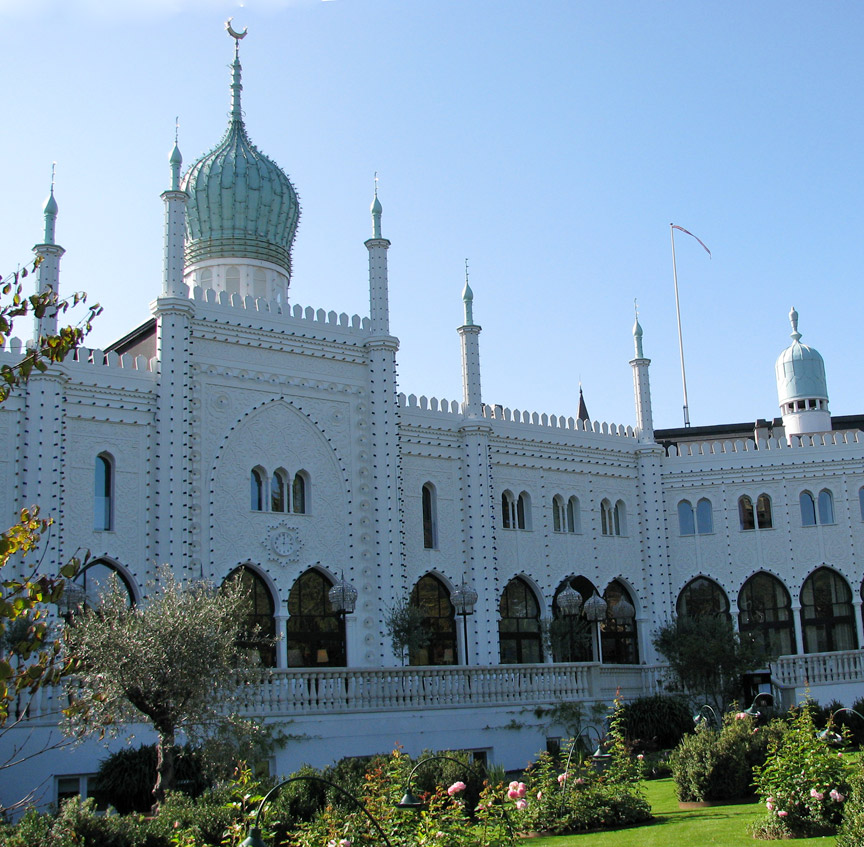
Nimb restaurant
The amusement park was first called "Tivoli & Vauxhall"; "Tivoli" alluding to the Jardin de Tivoli in Paris (which in its turn had been named from Tivoli near Rome), and "Vauxhall" alluding to the Vauxhall Gardens in London.
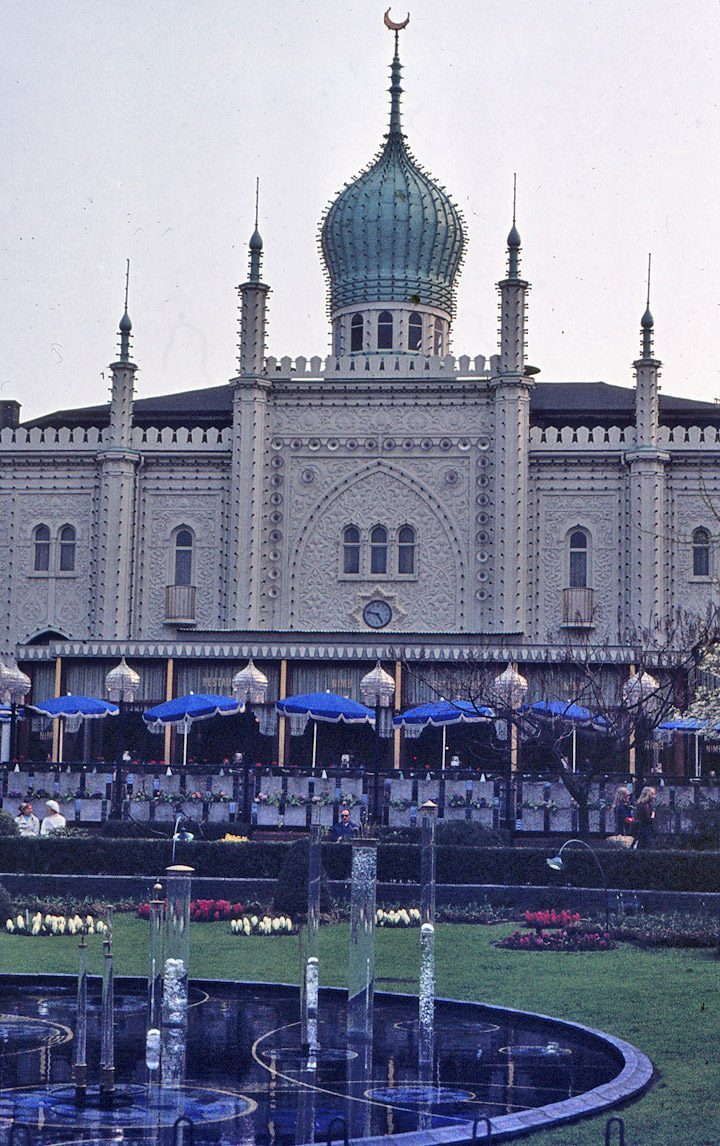
Tivoli's founder, Georg Carstensen (b. 1812 - d. 1857) obtained a five-year
charter to create Tivoli by telling King Christian VIII that "when the people
are amusing themselves, they do not think about politics". The monarch granted
Carstensen use of roughly 15 acres (61,000 m²) of the fortified glacis outside
Vesterport (the West Gate) at the annual rent of 945 kroner. Therefore, until
the 1850s, Tivoli was outside the city, accessible through Vesterport.
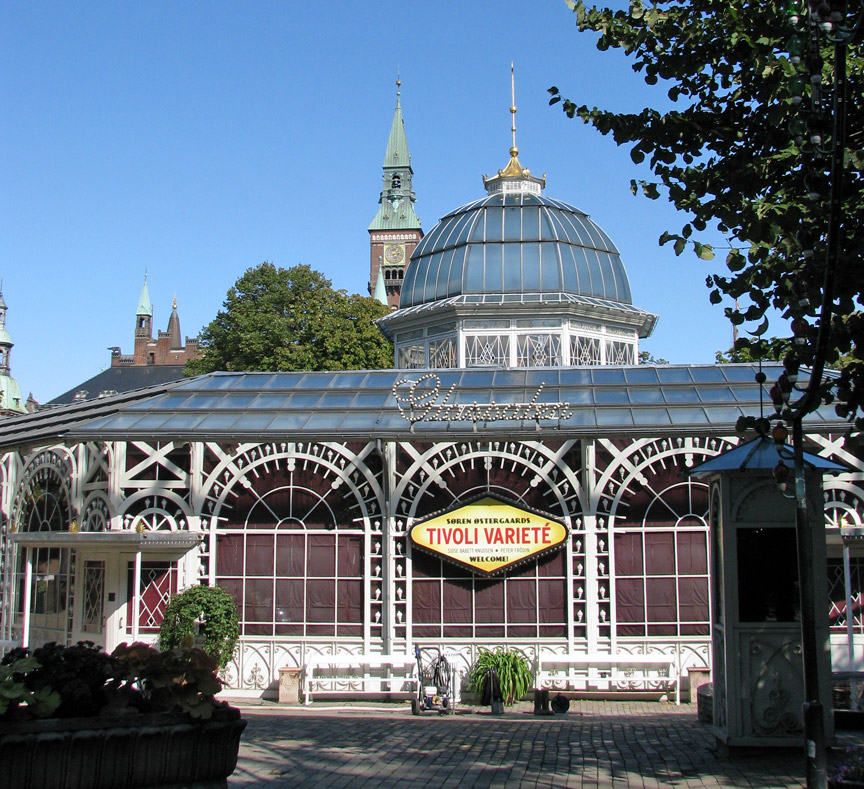
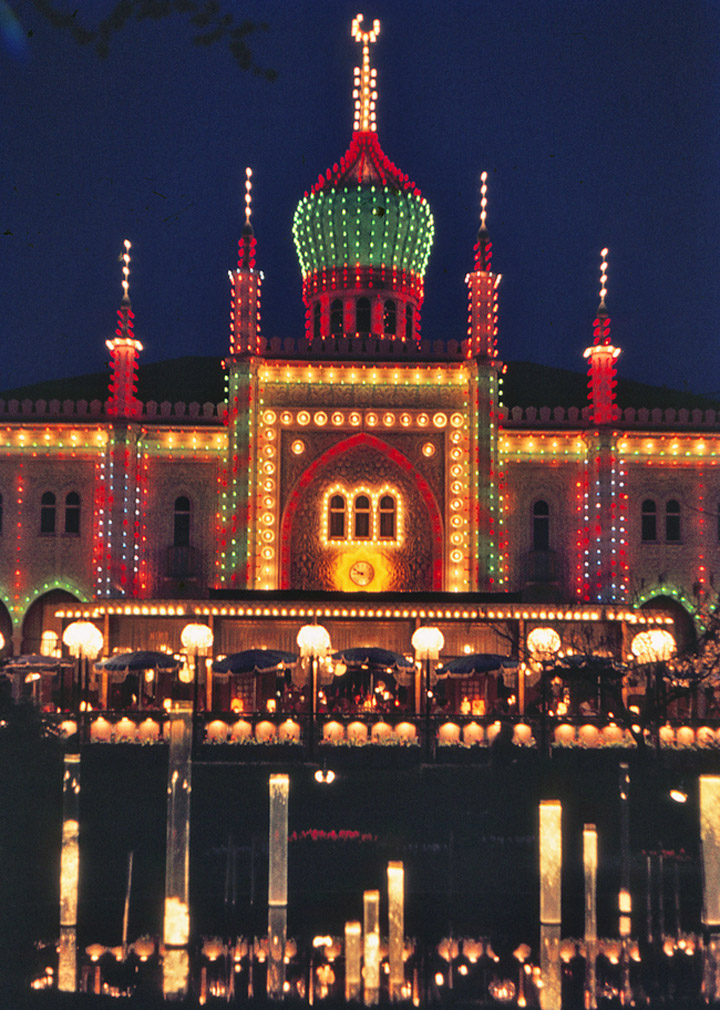
at night
From the very start, Tivoli included a variety of attractions: buildings in the exotic style of an imaginary Orient: a theatre, band stands, restaurants and cafés, flower gardens, and mechanical amusement rides such as a merry-go-round and a primitive scenic railway. After dark, colored lamps illuminated the gardens. On certain evenings, specially designed fireworks could be seen reflected in Tivoli's lake.
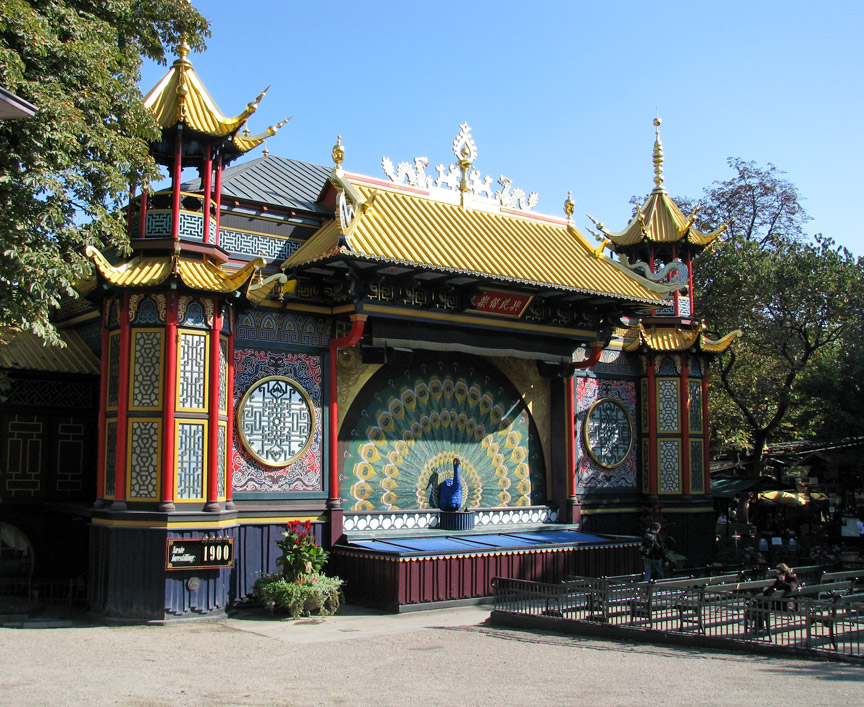
Pantomime Theater
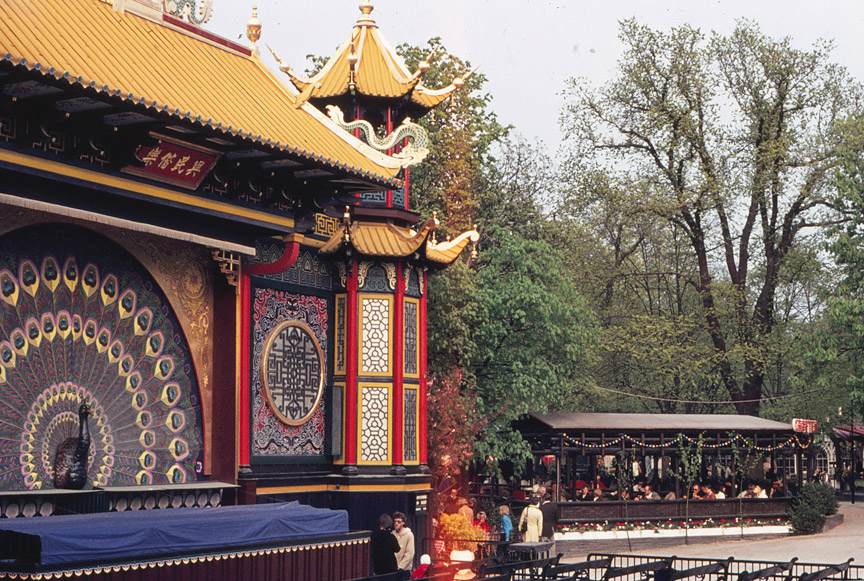
Composer Hans Christian Lumbye (b. 1810 - d. 1874) was Tivoli's musical director
from 1843 to 1872. Lumbye was inspired by Viennese waltz composers like the
Strauss family (Johann Strauss I and his sons), and became known as the "Strauss
of the North." Many of his compositions are specifically inspired by the
gardens, including "Salute to the Ticket Holders of Tivoli", "Carnival Joys" and
"A Festive Night at Tivoli". The Tivoli Symphony Orchestra still performs many
of his works.
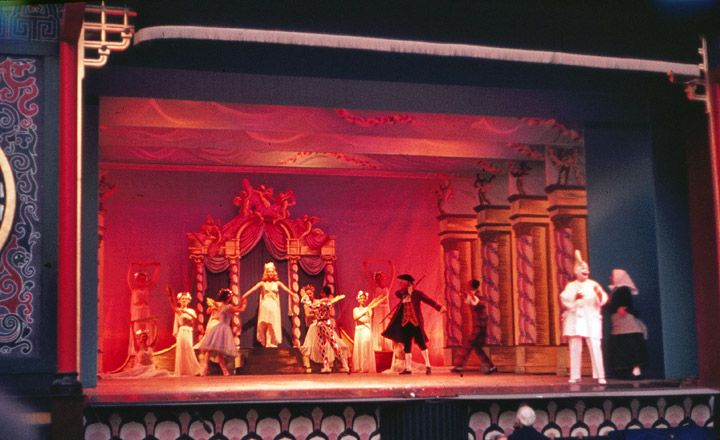
evening presentations
In 1943, Nazi sympathizers attempted to break the Danish people's spirit by burning many of Tivoli's buildings, including the concert hall, to the ground. Undaunted, the Danes built temporary buildings, and the park was back in operation after a few weeks.
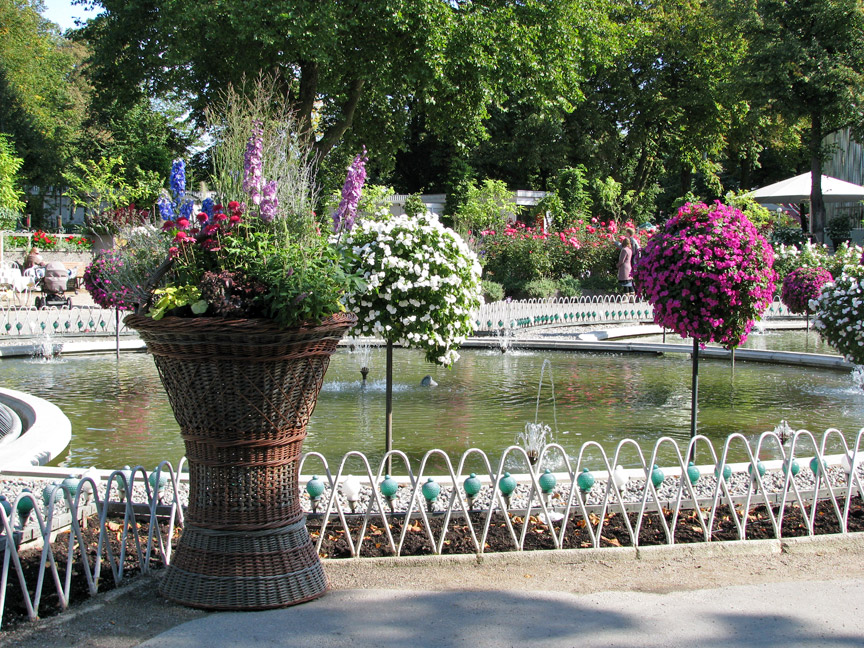
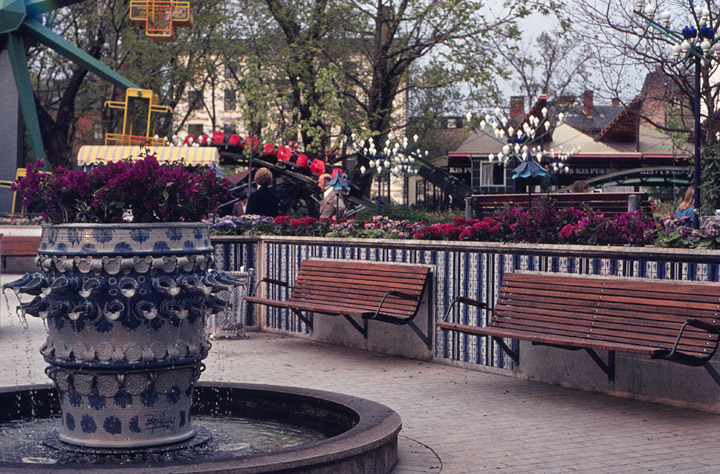
In 1874, Chinese style Pantomimeteatret (The Pantomime Theatre) took the place
of an older smaller theater. The audience stands in the open, the stage being
inside the building. The theatre's "curtain" is a mechanical peacock's tail.
From the very beginning, the Theater was the home of Italian pantomimes,
introduced in Denmark by the Italian Giuseppe Casorti. This tradition, which is
dependent on the Italian Commedia dell'Arte has been kept alive, including the
characters Cassander (the old father), Columbine (his beautiful daughter),
Harlequin (her lover), and, especially popular with the youngest spectators, the
stupid servant Pierrot. The absence of spoken dialogue is an advantage, as
Tivoli is now an international tourist attraction.
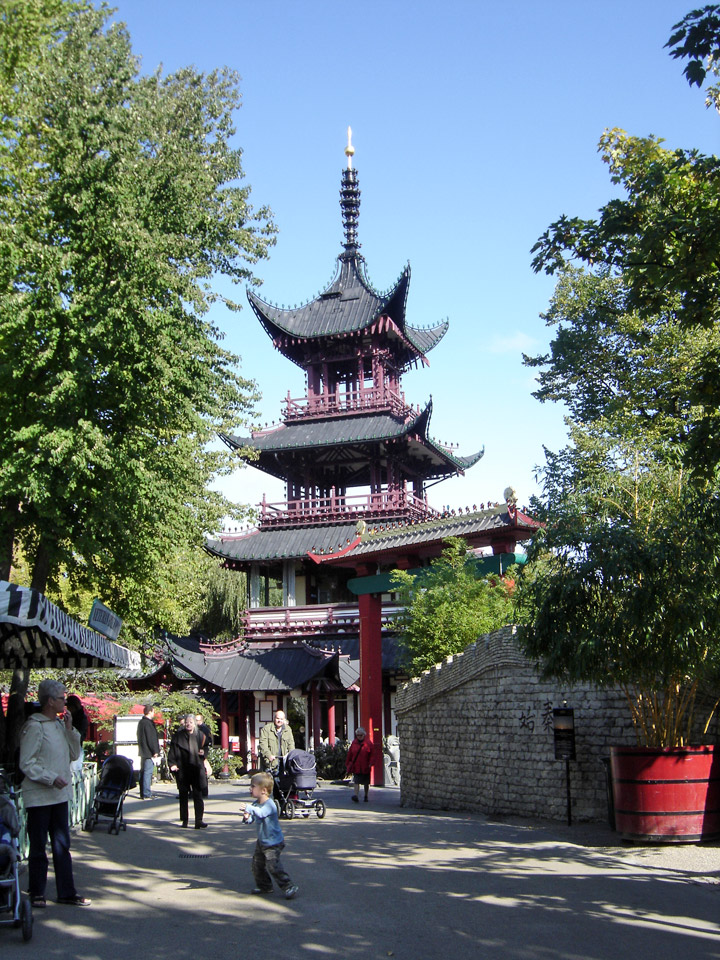
Pagoda
for children of all ages
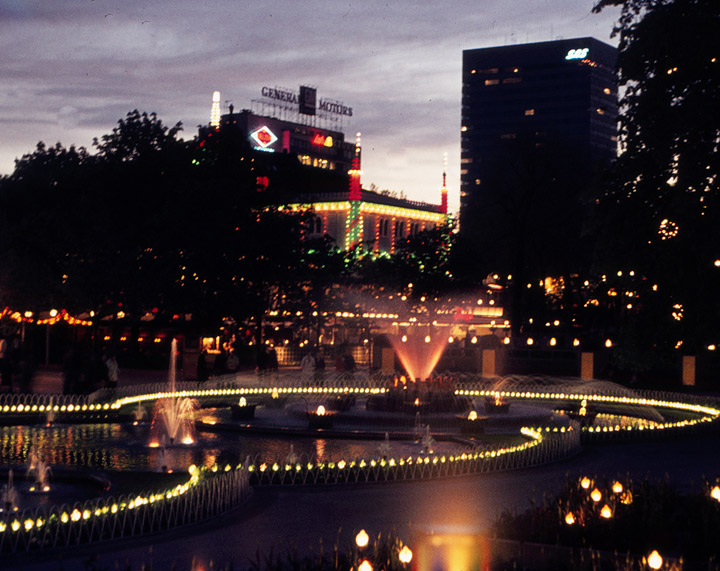
Tivoli is always evolving without abandoning its original charm or traditions.
As Georg Carstensen said in 1844, "Tivoli will never, so to speak, be finished,"
a sentiment echoed just over a century later when Walt Disney said of his own
Tivoli-inspired theme park, "Disneyland will never be finished as long as there
is imagination left in the world."
Text from Wikipedia
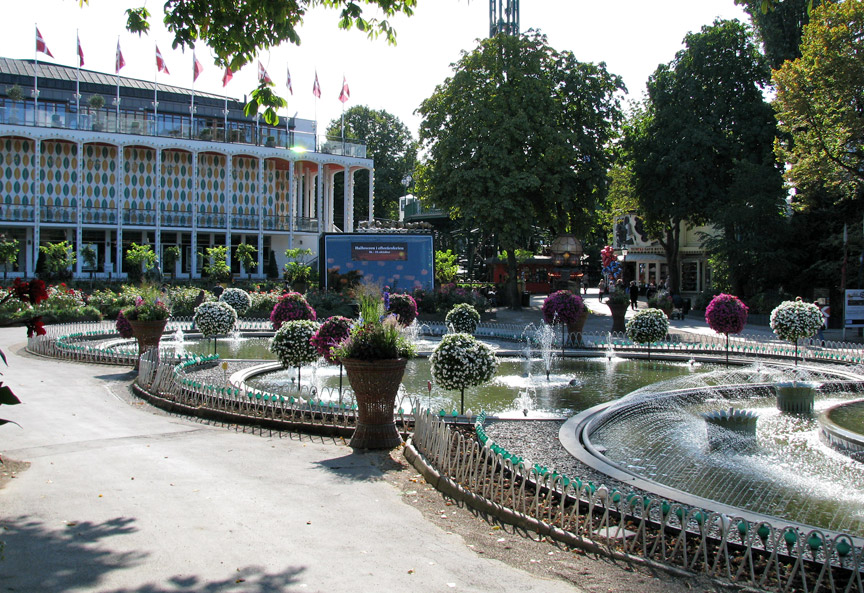
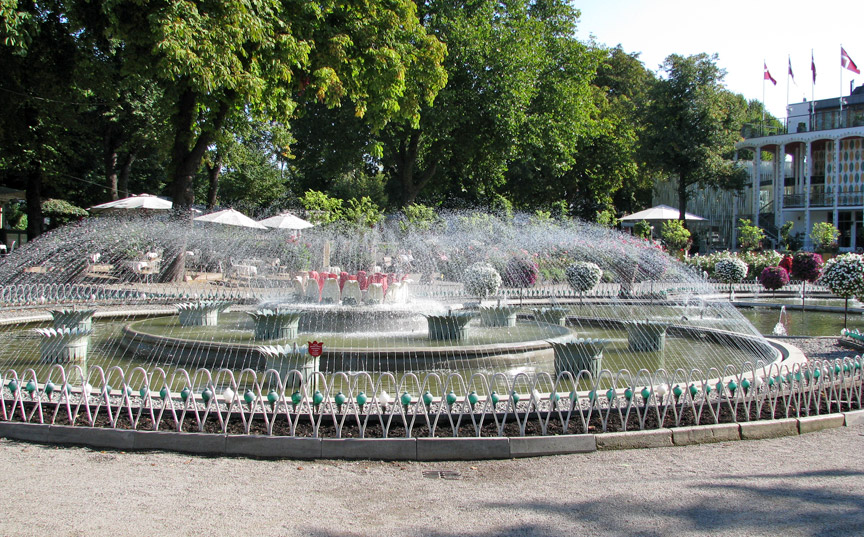
More Photos of Tivoli from the revisit in 2008